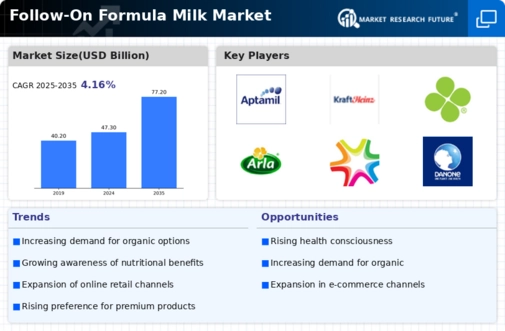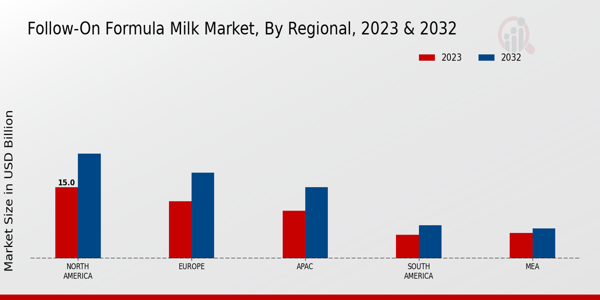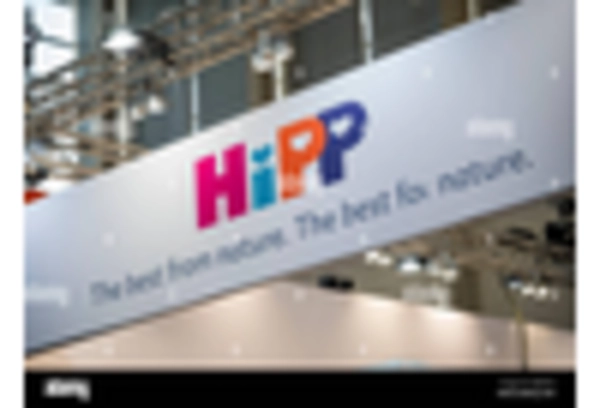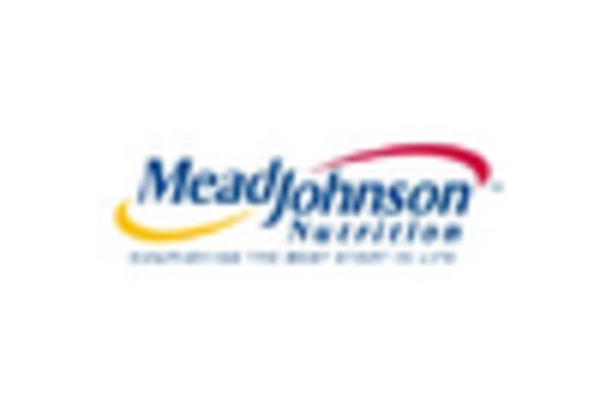Growing Number of Working Mothers
The Follow-On Formula Milk Market is significantly influenced by the increasing number of working mothers. As more women enter the workforce, the demand for convenient and nutritious feeding options for infants has escalated. Follow-on formula milk serves as a practical solution for working mothers who seek to balance their professional responsibilities with the nutritional needs of their children. This demographic shift is prompting manufacturers to innovate and market products that cater specifically to the needs of busy parents. Furthermore, studies indicate that nearly 60% of mothers in many regions are now employed, which correlates with a rising preference for formula feeding. This trend is likely to sustain the growth of the follow-on formula milk segment, as it aligns with the evolving lifestyles of modern families.
Expansion of Distribution Channels
The Follow-On Formula Milk Market is witnessing an expansion of distribution channels, which is facilitating greater accessibility for consumers. Retailers are increasingly diversifying their offerings by including follow-on formula milk in supermarkets, pharmacies, and online platforms. This trend is particularly significant as e-commerce continues to gain traction, allowing parents to conveniently purchase products from the comfort of their homes. The rise in online sales channels has been supported by advancements in logistics and supply chain management, ensuring timely delivery of products. Market data suggests that online sales of follow-on formula milk are expected to account for a substantial share of the market, potentially reaching 30% by 2026. This expansion not only enhances consumer access but also fosters competition among brands, ultimately benefiting the end-users.
Regulatory Support for Infant Nutrition
The Follow-On Formula Milk Market is benefiting from increased regulatory support aimed at ensuring the safety and quality of infant nutrition products. Governments and health organizations are implementing stringent guidelines and standards for the formulation and marketing of follow-on formula milk. This regulatory framework is designed to protect consumers and promote healthy feeding practices among infants. As a result, manufacturers are compelled to adhere to these standards, which enhances product credibility and consumer trust. The presence of robust regulations is likely to stimulate market growth, as parents are more inclined to purchase products that meet established safety criteria. Additionally, the regulatory environment encourages innovation, prompting companies to develop new formulations that align with health guidelines, thereby expanding their market reach.
Increasing Awareness of Infant Nutrition
The Follow-On Formula Milk Market is experiencing a notable surge in consumer awareness regarding the nutritional needs of infants. Parents are increasingly informed about the importance of balanced nutrition during the weaning phase, which is crucial for a child's growth and development. This heightened awareness is driven by various factors, including educational campaigns and the proliferation of information through digital platforms. As a result, the demand for follow-on formula milk, which is designed to meet the specific dietary requirements of infants aged six months and older, is expected to rise. Market data indicates that the segment is projected to grow at a compound annual growth rate of approximately 7% over the next five years, reflecting the growing recognition of the role of proper nutrition in early childhood development.
Rising Disposable Income and Urbanization
The Follow-On Formula Milk Market is experiencing growth driven by rising disposable income levels and urbanization trends. As families attain higher income levels, they are more inclined to invest in premium nutrition products for their children. Urbanization is also contributing to this trend, as urban families often seek convenient and high-quality feeding options. The increasing availability of diverse follow-on formula milk products in urban areas caters to the preferences of health-conscious parents. Market data indicates that regions with higher urbanization rates are witnessing a faster adoption of follow-on formula milk, with sales projected to increase by approximately 10% in urban centers over the next few years. This correlation between economic growth, urban living, and the demand for quality infant nutrition is likely to shape the future landscape of the follow-on formula milk market.


















Leave a Comment